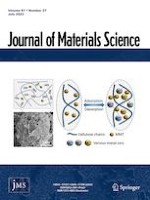07.07.2022 | Chemical routes to materials
Unveiling mechanism of surface-guided platinum nanowire growth
Erschienen in: Journal of Materials Science | Ausgabe 27/2022
EinloggenAktivieren Sie unsere intelligente Suche, um passende Fachinhalte oder Patente zu finden.
Wählen Sie Textabschnitte aus um mit Künstlicher Intelligenz passenden Patente zu finden. powered by
Markieren Sie Textabschnitte, um KI-gestützt weitere passende Inhalte zu finden. powered by
